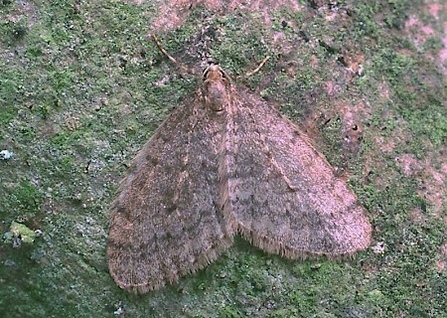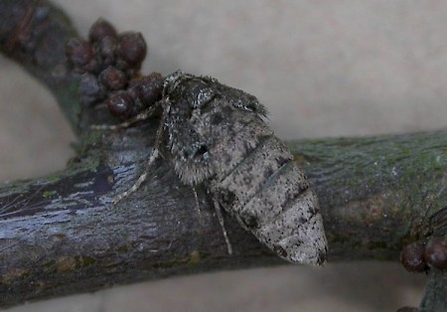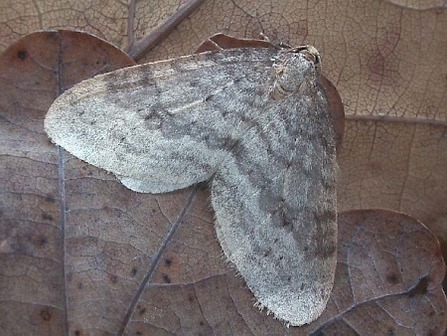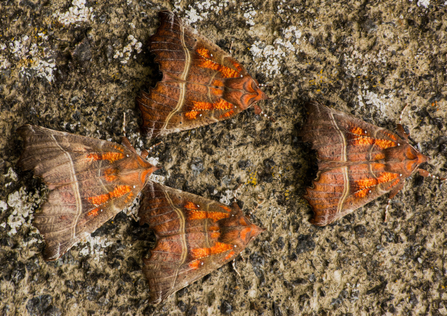The Winter moth is common across the UK, occurring late Autumn through to February. They have evolved to come out in winter, when there are fewer predators. Male moths have dark cross bands on their wings, females are virtually wingless, and crawl up tree-trunks to await the arrival of males.
Winter moths

Male Winter moth (Nick Greatorex-Davies)

Female WInter moth (Dave Wilton)
The Winter moth has a preference for hedgerows which is why you are likely to see them when driving. Females will lay eggs on a wide range of broadleaved trees and shrubs, larvae will hatch in the Spring. Interestingly, Blue tits time their breeding to coincide with the emergence of Winter moth caterpillars. A single brood of Blue tits can eat up to 10,000 caterpillars!

Northern winter moth (Nick Greatorex-Davies)
Other moth species occurring at this time of the year include the Northern winter moth. They are much larger than the Winter moth and have paler, shiny wings.

Herald moth (Bob Coyle)
You may also see the Herald moth, this moth would have been hibernating over winter but will now start emerging. The Herald can be identified by wing markings in the shape of the letter ‘H’.
Did you know – many adult moths do not have mouth parts. Spending most of their life span as caterpillars, by the time they emerge as moths their sole aim is to mate, often only living for a few weeks.

